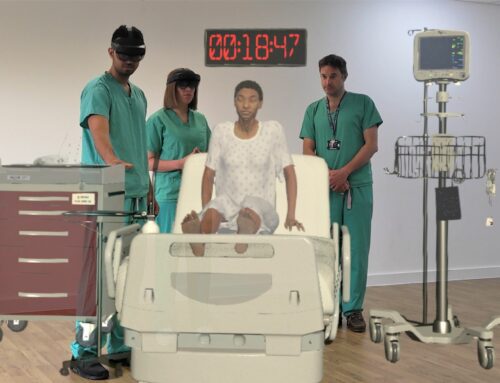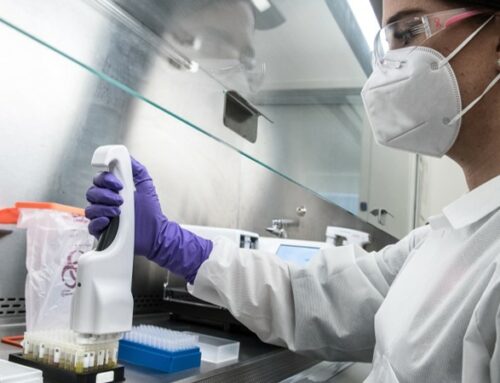By: Ken Londoner, CEO at BioSig
Biomedical signals—the measurement of physiological activity ranging from cardiac and neural rhythms to organ or tissue images[1]—may represent the answer to a host of unmet clinical needs in healthcare. Effective use of biomedical signal processing can help physicians discover new ways of diagnosing and treating multiple conditions.
Signal Clarity: Transforming Cardiac Rhythm Management
Electrophysiology (EP), which is the subset of cardiology specializing in cardiac rhythm management, is one of the areas of medicine that relies most heavily on advancements in biomedical signal processing. During an ablation—the minimally invasive procedural treatment for irregular heart rhythms (arrhythmias)—digital recording systems are used to display the surface and intracardiac signals of the heart to help physicians visualize, locate, and hopefully terminate a potentially deadly arrhythmia.
The ability to record and display electroanatomical activity in the heart is a complex task. Dr. Bradley Knight, Director of Cardiac Electrophysiology at Northwestern Medicine and the Editor-in-Chief of EP Lab Digest, a leading industry publication, highlighted that, despite the recent advancements in signal processing, “the quality of [signal recordings] remains suboptimal.”[2] According to Knight, common challenges include eliminating excess noise in the laboratory that makes it difficult to locate the arrhythmia, loss of critical components of the signal during the digital filtering process, and low-resolution or saturated signals.
Recognizing the shortcomings and unmet needs in this area of healthcare, BioSig Technologies, Inc., developed the PURE EP™ System, a signal acquisition, processing, and analysis platform designed to increase the success of ablations by revealing the full range of cardiac signals with high signal clarity for real-time view during a procedure.
The Power of Clinical Data: Optimizing Therapy Delivery
There are many reasons why biomedical signals are increasingly popular among experts in healthcare and technology. Along with applications across many disease areas, biomedical signal processing is also recognized as a viable adjunct and potential improvement to pharmaceutical treatment. While pharmaceuticals are a vital component of health management that offer solutions to countless health conditions, unlocking the capacity of biomedical signals can bridge the gap between the limit of pharmaceutical solutions and more customizable, personalized, and potentially effective scientific solutions. Recent advancements in biomedical signal processing focus on treatment mechanisms that can preserve valuable clinical information to optimize therapy delivery and meet the individual needs of patients. The ability to extract valuable clinical information while simultaneously self-adjusting based on changes in a patient’s condition represents just some of the revolutionary possibilities for biomedical signal processing. In the medical device industry, data is power. And the future of healthcare innovation can be realized by converting this powerful knowledge into action.
BioSig has developed a comparable model of customization with its own technology. The PURE EP™ System is equipped with proprietary hardware and novel software architecture, including specialty digital filters, that facilitate signal interpretation during therapy delivery that may improve the overall efficacy and outcomes of each ablation procedure. Technological advancements in signal processing can complement and, in many cases, provide a preferable treatment option over drug therapy. This is an emerging theme in electrophysiology among the rising numbers of studies investigating the effectiveness of cardiac ablations as the first-line therapy for arrhythmia patients.
New Frontiers: The Future of Bioelectronic Medicine
Biomedical signal processing possesses vast potential for patient care. From the emerging field of bioelectronic medicine to the growing demand for Artificial Intelligence (AI), there is a diverse array of opportunities for signal processing in healthcare.
Bioelectronic medicine is a cutting-edge field that directly explores how targeted electrical signals can harness the body’s natural processes to diagnose and treat a range of diseases – from diabetes and chronic pain to Parkinson’s and cancer. The field focuses on personalized, closed-loop interventions with customized care guided by the body’s natural operations. Like electrophysiology, this emerging field offers an approach to detecting and treating disease that uses electrical pulses and the body’s own mechanisms as an adjunct or alternative to drugs and more invasive medical procedures
BioSig’s neurostimulation division utilizes its proprietary signal processing software to develop a novel nerve-sensing technology that can optimize existing neurostimulation therapies and hopefully unlock novel solutions to diagnose and treat neurological disorders. The pilot application of this platform technology targets hypertension, a condition that is known as the single most significant contributor to death[3]
Our bodies are the guiding roadmap when it comes to understanding our health. Like an advanced translator, biomedical signals can help interpret vital physiological information, eliminate guesswork, inform better clinical decisions, and lead to healthier outcomes.
Understanding that our bodies already possess the answers to the critical health needs of today is the first step in helping biomedical signals crack the code and open the door to a healthier tomorrow.
[1] https://users.ece.cmu.edu/~moura/papers/hsunhsien-chang-moura-biomedicalsp-2010.pdf
[2] https://www.eplabdigest.com/further-optimizing-electrogram-signal-quality-ep-lab
[3] HealthcareAnalyst, Inc., February 2020












